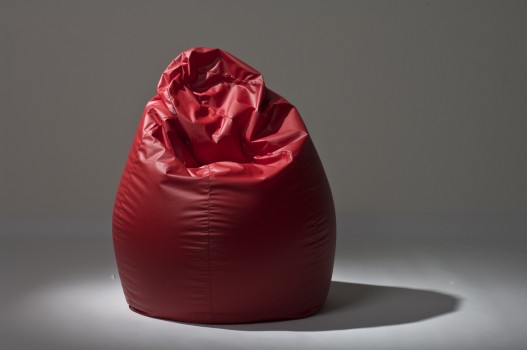
The anti-design movement started in 1966, and ended in 1980. It is also known as the ''radical-design period''. It originated from Italy, and it's main characteristics were; striking bright colours, scale distortion, irony and kitsch.
Some of the radical groups were; SuperStudio, Gruppo Strum and Studio Achimia.Some radical designers were Carlo Mollino, Cleas Oldenburg, Franco Mello and Alessandro Mendini.Lussu Chair The lussu chair by Alessandro Mendini was designed in 1974. Only two of this chair were ever made. It was made out of wood and was given the Dadaist treatment; fire to obtain the texture it has. It was then painted over. Alessandro wanted to challenge the user and so put a huge platform at the bottom. Just this feature made it a task to climb into the seat. He wanted to eliminate the boundaries between art and design, and went against all the ''design rules''.Thonet ChairThis re-design of the Thonet chair was made in 1978. With this chair, Alessandro was celebrating the last great chair designer inventor Michael Thonet. He also honors chemistry and science behind the bentwood process with the atom adoring the back.


The Boalum Flexible Lamp designed in 1969 is another iconic anti-design product. It was designed by Gianfranco Frattini and Livio Castiglioni and manufactored by Artemide. This lamp consists of one long plastic tube with light-bulbs all wired inside, so it lights up. It doesn't have a permanent form as it is flexible and whoever uses it can manipulate it however they wish or need it to be. In other word, it allows the user to determine the form to some extent.
 |
| Left: Dropped Cone , Claes Oldenburg & Coosje van Bruggen, 2001 Neumarkt Galerie, Cologne, Germany Right: Spoon Bridge and Cherry , Claes Oldenburg & Coosje van Bruggen, 1988 Another designer That Made a huge part of the anti-design movement was Claes Oldenburg. As he had once said, "I am for an art thats political-erotical-mystical, that does something other than sit on its ass in a museum." The designer took ordinary object one sees everyday, and turned them into gigantic sculptures. He set them in city scrapes and made them Appear thatthey had leg accidentally dropped. (From Brobdingnag, the continent where giants live from Gulliver's Travels.) |
As the 1980's approached, the anti-design was dying out and a new movement called post-modernism swung in full gear. The difference between these two movements was that anti-design was more theatrical, exaggerated and had vivid colours, while post-modernism was an unstable mix of theatrical and theoretical, and characterized by self conscience use of earlier styles.

ANTI-DESIGN

POSTMODERN DESIGN
admin. (/). /. Available: http://antidesigns.com/. Last accessed 1st january 2014.
admin. (/). /. Available: http://antidesigns.com/. Last accessed 1st january 2014.

No comments:
Post a Comment